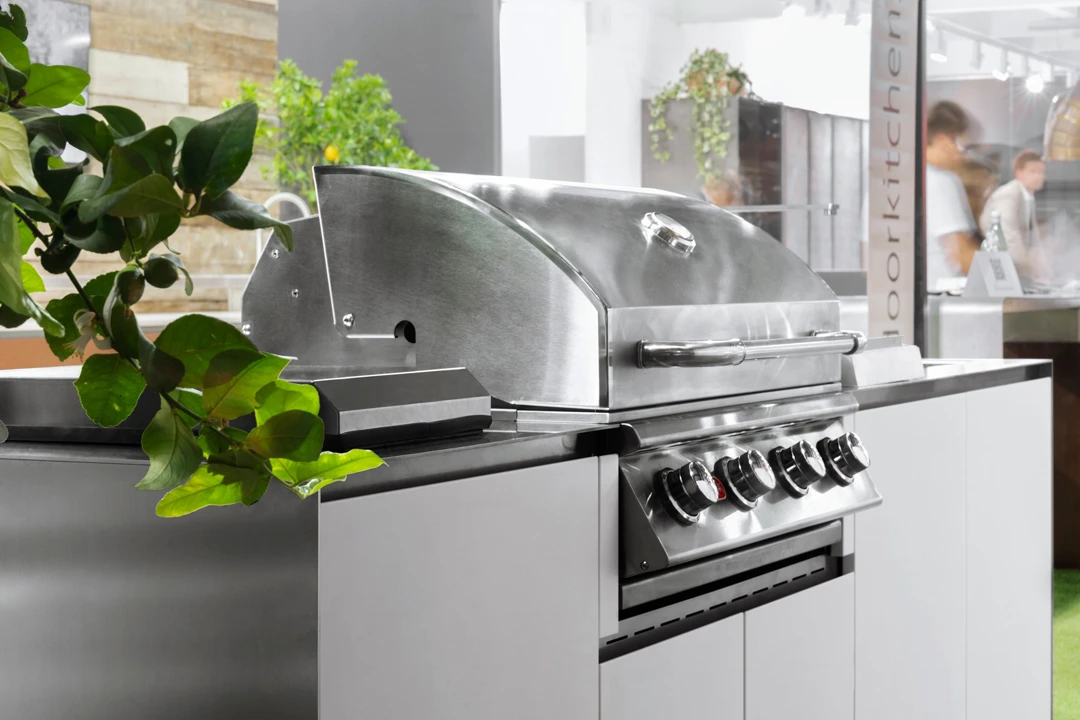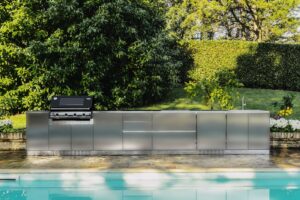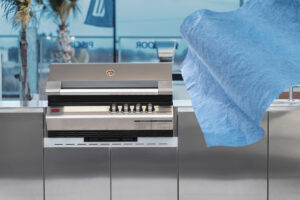Stainless steel is a material that has revolutionized various industrial sectors thanks to its incredible resistance to corrosion, versatility, and durability over time. One of its most appreciated aspects is its ability to resist atmospheric agents, which makes it ideal for outdoor applications and environments exposed to the elements. In this article, we will explore the characteristics that give stainless steel its resistance and its main applications.
What are the factors that make stainless steel resistant to atmospheric agents
The resistance of stainless steel to atmospheric agents derives from its chemical composition and in particular from the presence of chromium (at least 10.5% to be classified as stainless). Chromium, once exposed to oxygen, forms a surface layer of chromium oxide that acts as a protective barrier against moisture and other corrosive substances and which, even if it can be damaged or scratched, has the extraordinary ability to self-regenerate, ensuring constant protection.
Chromium is the crucial element that gives stainless steel its resistance to corrosion, i.e., the oxidation of metal that leads to the formation of rust. But, in addition to chromium, stainless steel can contain other elements such as nickel, molybdenum, and titanium, which further improve its resistance to corrosion and high temperatures. In this way, the material maintains its protective properties even in particularly difficult environments, such as coastal areas with high salinity or industrial areas with exposure to aggressive chemicals.
Types of stainless steel: properties and use
There are different types of stainless steel, each of which has slightly different properties in terms of resistance to atmospheric agents. The main ones are:
1. austenitic stainless steel (300 series): austenitic stainless steels are the most commonly used and include alloys of the 300 series. They are distinguished by their high chromium and nickel content, which guarantees excellent corrosion resistance. Among these, the most common are:
- 304 stainless steel which, composed of 18-20% chromium and 8-11% nickel, is the most common type and used for outdoor applications. However, despite offering good corrosion resistance in ordinary environments, this stainless steel may not be suitable in areas with high salt concentrations or in particularly aggressive environments, such as industrial ones;
- 316 stainless steel which, with 16-18% chromium, 11-14% nickel, and 2-3% molybdenum, has a very high resistance to corrosion and is therefore one of the best materials for saline environments (such as marine ones) and for industrial atmospheres rich in aggressive chemical agents. It is particularly suitable for extreme exposure conditions and therefore ideal for the naval industry, coastal structures, swimming pools, and offshore platforms, but it is also widely used in railings, stairs, and building facades, always located in marine environments;
2. ferritic stainless steel (400 series): ferritic stainless steels have a lower amount of nickel and are therefore more economical but offer lower corrosion resistance compared to austenitic ones:
- 430 stainless steel, characterized by 16-18% chromium and absence of nickel, offers decent corrosion resistance in indoor and atmospheric environments that are not particularly aggressive. However, it is not suitable for use in marine or heavy industrial environments where chloride corrosion is significant. It is therefore used in household appliances, indoor furnishings, and, in general, applications that do not require high corrosion resistance, such as window frames or some types of automotive components;
- 409 stainless steel, composed of 11% chromium and a small amount of titanium, offers good resistance to oxidation and light corrosion, but is less effective than 300 series steels in aggressive environments. It is often used in vehicle exhaust systems and other applications that require heat and corrosion resistance without excessive cost.
3. martensitic stainless steel: characterized by a martensitic crystal structure that confers greater hardness and mechanical strength compared to other types of stainless steel, martensitic stainless steel generally has lower corrosion resistance. 410 stainless steel, in particular, is composed of 11.5% chromium and a low amount of nickel and, despite offering moderate corrosion resistance, tends to oxidize more easily than austenitic steels, especially in aggressive outdoor environments: it is more resistant to corrosion from humidity and atmospheric agents compared to carbon steels, but less so compared to 304 and 316 stainless steels. It is therefore used for cutting tools, turbines, and some parts of industrial equipment that require high mechanical strength and moderate corrosion resistance.
4. duplex stainless steel: with a mixed microstructure of austenite and ferrite, duplex stainless steel has superior corrosion resistance and excellent mechanical strength. 2205 duplex steel, in particular, is composed of 22% chromium, 5-6% nickel, and 3% molybdenum and therefore offers very high corrosion resistance, especially in the presence of chlorides and marine environments. Moreover, thanks to its structure, it is also highly resistant to stress and mechanical fatigue, an essential condition for heavy industrial applications where great robustness is required. For this reason, it is often used for offshore platforms, pipelines, chemical tanks, and infrastructure in coastal environments.
5. precipitation hardening stainless steel: through a precipitation aging treatment, precipitation hardening stainless steel combines corrosion resistance and high mechanical strength. 17-4 PH stainless steel, in particular, is composed of 17% chromium, 4% nickel, with the addition of copper and niobium. It offers good corrosion resistance, comparable to 304 stainless steel, but with exceptional mechanical strength. It can therefore be used in outdoor environments where high mechanical stress and decent resistance to atmospheric agents are required, such as aeronautics, structural engineering, and high-precision components.
An incredibly versatile material, with various alloys offering various levels of resistance to atmospheric agents, stainless steel is the ideal solution for resistance, durability, and functionality in the most varied applications, especially on outdoor kitchens.






